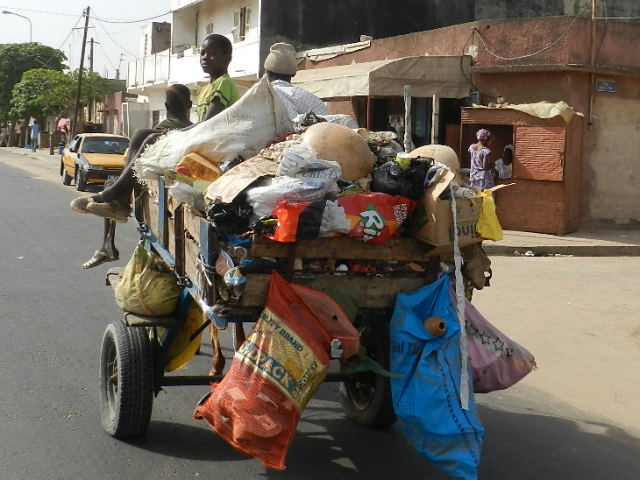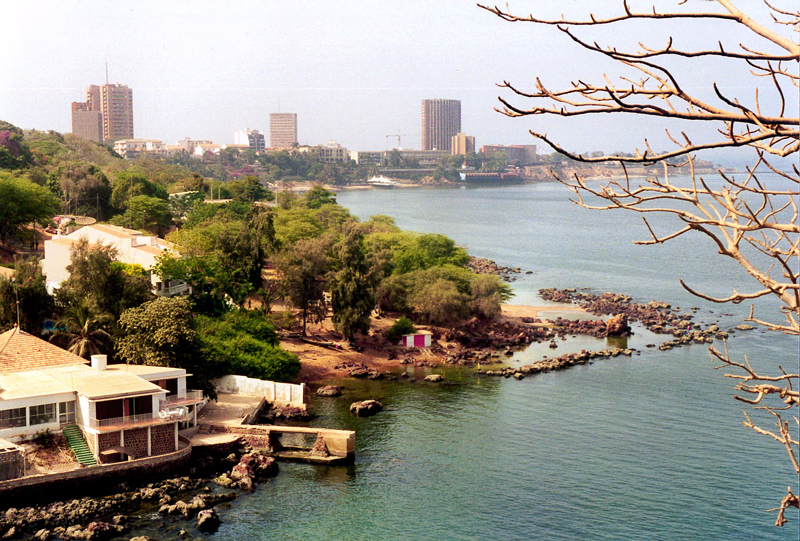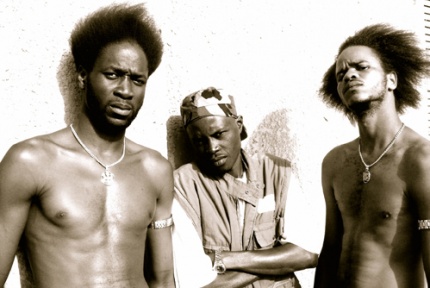Senegal
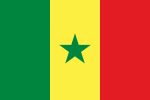
Senegal is the westernmost country of Africa and covers a land area of 197 000 square kilometres and has an estimated population of about 16 million. The name Senegal comes from the river Senegal which means in the language of the Wolof “Our Boat”.
Location and Landscape
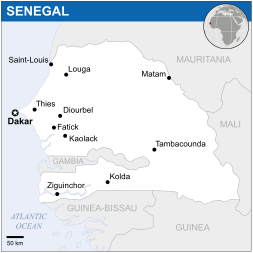
(c) UNOCHA
Senegal is a country in West Africa with a beautiful coastline at the Atlantic. It belongs to the Sahel region along with Mauretania, Mali, Niger and Burkina Faso. These are semi-desert countries with large areas of thorn savannah. The climate is tropical, there is a short rainy season and a dry season from November to May. In the north of Senegal water is rare, droughts occur very often. The Gambia is a small country surrounded by Senegal. Senegal is the bridge between the Sahelian Zone and the Tropics. The Harmattan, a dry, sandy wind from the Sahara blows in the north from November until March. Rainy monsoons are the main part of Southern Senegal’s weather.

(c) Mathieur DAMMAN CCBYSA1.0
Three rivers flow through Senegal: The Senegal, Casamance and Gambia. Gallery forests grow along the rivers. The Senegal River separates the north of the country from Mauretania. The majority of the Senegalese live on the coast or on river banks. These areas are very fruitful and many plants such as millet, yam and manioc grow here. Many Senegalese live of fishing in coastal waters and rivers where fish can be found in abundance. The south of Senegal is on the border of the tropics – palm trees and tropical forests grow here.
The Casamance is a beautiful area in the south of Senegal. With its tropical landscapes watered by the Casamance River, this area has become a tourist destination. Between the sleepy capital, Ziguinchor, and the wide, sandy beaches of Cap Skirring, the banks of the Casamance River are dotted with tiny, community campements that nestle between mangroves and lagoons. The region is the homeland of the fascinating Diola people.
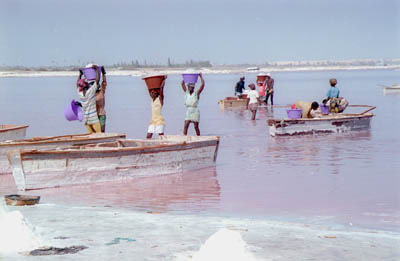
(c) Bernard bill5
The Lac Retba, a salt lake northeast of Dakar is a special feature of Senegal. The lake is a deep shade of pink because the water contains pink-glowing microorganisms. Originally the lake was part of a bay. Many millennia ago, the lake became separated off from this bay. As a result of this change, the water in the lake has a very high sea salt concentration, and over time this concentration has increased to ten times that of the sea. People therefore use the lake as a useful source of salt. The lake is now a UNESCO World Heritage Site.
Dakar
The capital of Senegal is Dakar, which is also the biggest city of the country. It is situated on the Cap-Vert peninsula on the Atlantic ocean. The port town was developed around a French fort and became a major center of the French colonial empire. In 1960 it became the capital of the independent republic of Senegal.
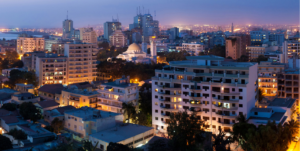
(c) Daouda 6363
Today Dakar is the cultural centre of Senegal with more than 2.5 million inhabitants. In comparison to some other cities in Senegal, Dakar is relatively westernized with its universities, museums, research institutions, TV- and Radio stations as well as the famous Théâtre National Daniel Sorano. In the centre of town, L’Institut Français, with its lush exotic gardens, offers an airy escape from the heat and the thrum of the streets. People sip cappuccinos in the cafe, students read in the library or watch films in the viewing rooms. The Galerie le Manège is part of the institute and houses exhibitions often free of charge. North of Dakar there is the Léopold Sédar Senghor international airport, one of the fastest growing airports in Africa. Some call it the worst airports in the world because immigration is very slow for both, in and out of the country. Once you are finally out, dozens of locals will try to get you into their taxis.
Tip: Visit Youssou N’Dour’s nightclub Thiossane (pronounced Cho-sann), where, every Saturday at 2am, the master himself performs his definitive brand of mbalax.
Peoples and Languages
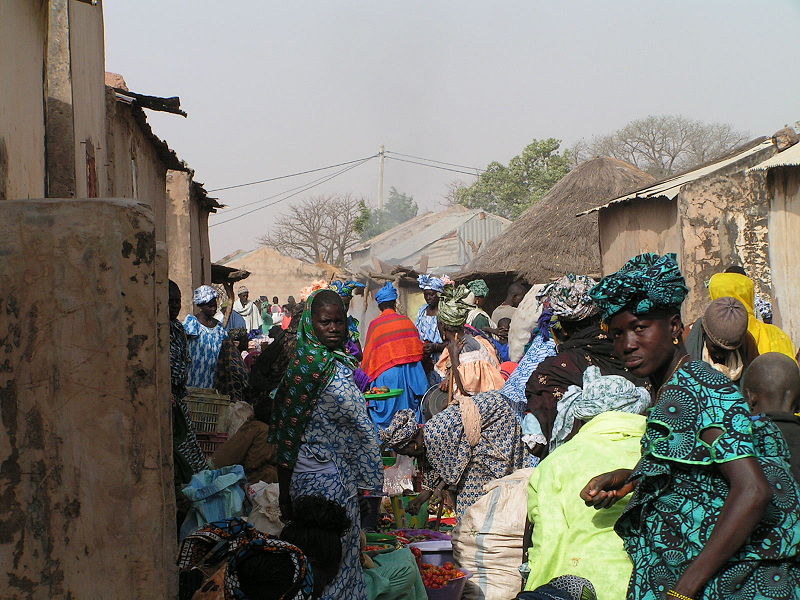
(c) Apethitan
Senegal has a population of more than 15 million people, many of whom live in rural areas. Although a majority of the Senegalese population belongs to the Wolof ethnic group, many other ethnicities are present today, including the Fula, Toucouleur and Serer. The singers and griots of the Wolof people are famous throughout Africa. The Serer are farming people based in the west of Senegal. They are well-known for the art of blacksmithing. Many women work in agriculture but just as many work as traders, and have monopoly on the markets. Children start to contribute to the family income at a young age. Cooking together is an enjoyable family event. Millet porridge, yams and fish are important elements of a celebratory meal and food is eaten out of large bowls. There is also the modern Senegal with its industries, universities and music clubs.
Art and Culture of Senegal
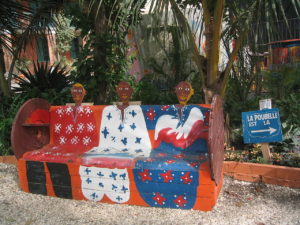
(c) Ji-Elle
Senegal has a rich and varied culture dating back centuries. The culture is centered around the idea of family. This even includes the way that they eat. When it is time to eat a typical meal someone will say “kai” or “kai lek” which means to come eat. Everyone will come together and sit around the plate and eat with their hands. Some famous dishes include Tiéboudienne and Yassa. The etiquette of people in Dakar is very simple but very vital. To not greet someone upon sight is to portray rudeness and oftentimes ignorance. Since the population is majority Muslim daily activities such as going to the mosque at noon prayer and attending the mosque on Fridays. Wrestling is very much part of Senegal’s culture. One match can attract 80,000 spectators and millions of TV viewers.
Music and dance play an integral role, and traditional music such as Yela, which mimics the sound of grain being pounded by female villagers, is still practiced by many people in Senegal. Musical instruments such as the kora are still played during celebrations in many parts of the country. Music has a big influence on the youth with artists like Daara J Family whose songs reflect the problems in their communities.The Senegalese musician Youssou N’Dour, famous for his fantastic hit Seven Seconds, was appointed the minister of culture in April 2012.
Economy and Natural Resources
Senegal has only a few natural resources. Most of the people live of fishing and agriculture. One of the most important food products is peanut oil, which was Senegal’s top agricultural-based export. Senegal’s economy is in transition. In recent years, environmental crises such as droughts have caused a shift in the country’s agricultural production. Many of the country’s factories are involved with the processing and refining of agricultural products. Today, mining, petroleum refining and the production of artificial fertilizers and chemicals account for a substantial part of the country’s economy.
Senegalese exports such as cotton, fabrics, calcium phosphate and refined petroleum are shipped all over the world, providing economic stimulus to the country. Top importers of Senegalese products include Italy, the United Kingdom and the United States. Since several years, Senegal’s tourism sector is rising. As Senegal used to be a French colony, the country is still popular with French tourists, many of whom spend their vacations in coastal regions.
Transportation
The colorful blue and yellow car rapide is one of Senegal’s symbols. They are the opposite of rapide and instead frequently stop and drive at slow speeds. Each one is painted differently, but they all proclaim “ALHAMDOULILAH,” praise be to God, across their fronts. If you look like you need a ride, passing black and yellow taxis will honk at you to let you know that they’re empty. The occasional taxi will be in good enough condition; however, never expect a working meter. Standard practice is to bargain with the driver for a price which is 500-3000CFA, usually 1000-2000CFA.
Schools, Universities and Higher Education
Senegal’s cultural center is Dakar, where most of the universities are located. The country is attempting to position itself in the forefront of the African educational reform movement. During the last decade Senegal’s government did much to improve the primary and secondary schools. The next step was to restructure the higher education system.
Some more universities were built to meet the needs of young people who are striving for higher education. In 2000, higher education professionals throughout West Africa were intrigued by Europe’s 1999 Bologna Declaration, seeing it as a potential model for their own educational reforms. Senegal’s education leaders began the reform process by bringing in elements of the North American system and by drawing heavily on the whole Bologna process. This reform aims to harmonise degree structures, credit systems and quality assurance procedures in all West African States. In the long term, this harmonisation is beneficial for all students but in the short term there has been confusion about what courses to take and how much time course work will demand. The universities also have to cope with overcrowding and a lack of facilities caused by a problem plaguing universities everywhere: shrinking budgets and exploding student populations.
Senegal’s History
The first human beings in Senegal were hunters but by about 3,000 BC they had learned to farm. About 500 BC knowledge of how to make iron tools reached west Africa. Around 300 AD the introduction of the camel to the western Sahara changed the acient trade routes and a trade network was installed running from Morocco to the Niger river. From the increased trade of gold, salt and slaves the Ghana empire arose around 400 AD. A century later a sophisticated society in Senegal was able to build stone circles. In the 9th century Senegal has become a Muslim country. Towns and trade flourished. In the 13th century the Empire of Mali took over the power in west Africa which included Senegal. However the power of Mali declined in the 15th century and broke up into small kingdoms. It was around that time when the first Portugese sailors discovered the west coast of Africa.
The Slave Trade and the Colonisation of West Africa
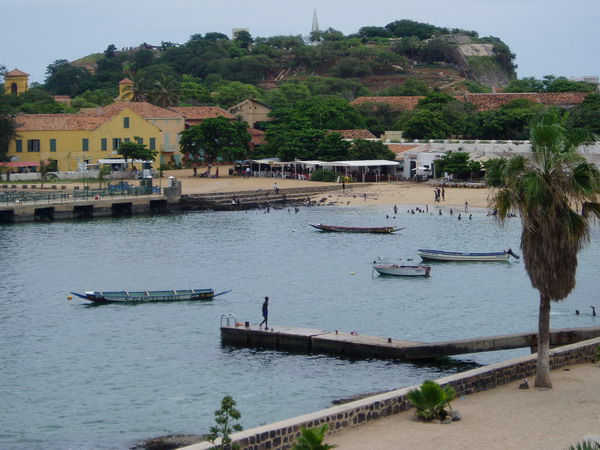
(c) Serenade
In 1444 the first Portugese ship reached the coast of Senegal. The Portuguese were particularly interested in avoiding the Arabians and the acquiring of African gold.
In the 17th century, the Portuguese trade network was occupied by French, Dutch and British colonies. The French established trading stations in St. Louis and Gorée, which had slave prisons and schools. It was in these stations that the captured Africans were gathered and shipped to America. Although there was already slavery in Africa, the globally-organised capture and exploitation of slaves had a devastating effect on the region.
The largest ethnic group in Senegal, the Wolof, formed several kingdoms between the 15th and 19th Centuries. During the colonial period, the Wolof adopted the European education system yet managed to retain their own distinct culture. The Serer, a peasant tribe from central and western Senegal, rejected the adoption of French culture. In 1891 the whole area of what we now call Senegal, fell entirely under French control. The old kingdoms were occupied by cantons and the French education system was introduced. The development of the community was influenced by French ideas.
The Independence of Senegal
Senegal gained independence on 20th August 1960. Senegal is one of the only democratic states on the African continent. Léopold Sédar Senghor, an acclaimed poet, was president in the first years of the independence. Senegal became fully independent in 1964. Léopold Sédar Senghor was the first president. Senegal strived for a modern cultural policy that would try and bind the traditional and western ideas together. Schools, museums and universities were built, teachers received better education and festivals were kept as integral aspects of society. After the government’s initial success, rapid population growth and government debt lead to poverty and growing social tensions.
A Place to Experience History
Gorée Island off the coast of Dakar is a highly symbolic place. It feels amazingly calm, with its lovely colonial houses in warm colours, sandy tracks and flourishing bougainvilleas, but it hosts dark reminiscences of the slave trade.
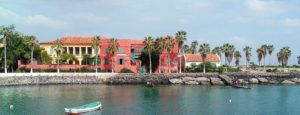
The controversy over the extent of slavery on Gorée Island is quite heated. But the House of Slaves, built in the late 18C in the same style as the trading houses and painted an intense pink colour, embodies the dramatic story experienced by the African people. Gorée is on the UNESCO World Heritage List.
Senegal Today
Today Senegal is considered one of Africa’s model democracies. The western African nation has a tradition of stable governments and civilian rule. With its capital Dakar, Senegal has established itself as a cultural centre in West Africa. Through its music, art and literature it has developed a modern cultural life on the west coast. This is why Senegal is one of the most visited countries in western Africa. In 2012 a great political change took place in Senegal. The country’s high unemployment rate mobilized youth against former President Abdoulaye Wade in the country’s 2012 presidential election. Joblessness was one of the main issues that drove many young people into the streets and to the voting stations to press for a change of government. At least six people died in the protests, and President Wade was defeated by the current leader, Macky Sall. Youth unemployment, which is 15 per cent in that country, fuels the fire of civil unrest not only in Senegal but also in other neighbouring countries. Aware of this, President Sall launched a programme to create 200,000 more jobs until 2017.
Literature from Senegal
The countries of West Africa are renowned for their oral traditions. For centuries griots (professional poetic artists) have been telling fairy tales, stories, poems, fables and legends. Griots have an extraordinary memory and are also excellent musicians. It is because of this tradition that Léopold Sédar Senghor became one of the first famous West African poets in Europe. His book of poetry Stars on the Night of your Skin Love poems from Léopold Sedar Senghor (1994) was translated into French and German.
Other supporters of the oral narrative tradition are Birago Diop, whose book Spirit daughters: The Stories of Amadou Koumba is full of fables and fairy tales from Senegal, and Ibrahima N’Diaye with her book Ndumbelaan. Fairy tales from Senegal (1997).
It sounds like a contradiction that in an Islamic society such as Senegal, in which women don’t have a very high position, there are so many women are writers. Mariama Bâ describes this contradiction perfectly in her novel A so long Letter, an African woman’s fate (1996) about a country that encourages education, only wanting that women are excluded from it. In Fatou Diome’s novel The Belly of the Ocean, the author describes how hard it has become for women of her generation to fight for an entry into education.
More at Emigration
Aminata Sow Fall’s novels are more concerned with life in traditional and modern African society. Her most famous books are The Beggar’s Strike (1997) and The Return of the Drums (2001).
More at Novels from traditional Africa
Marie Ndiaye’s 2010 novel Three Strong Women (Trois femmes puissantes), tells about the different fates of women in Africa and Europe today.

